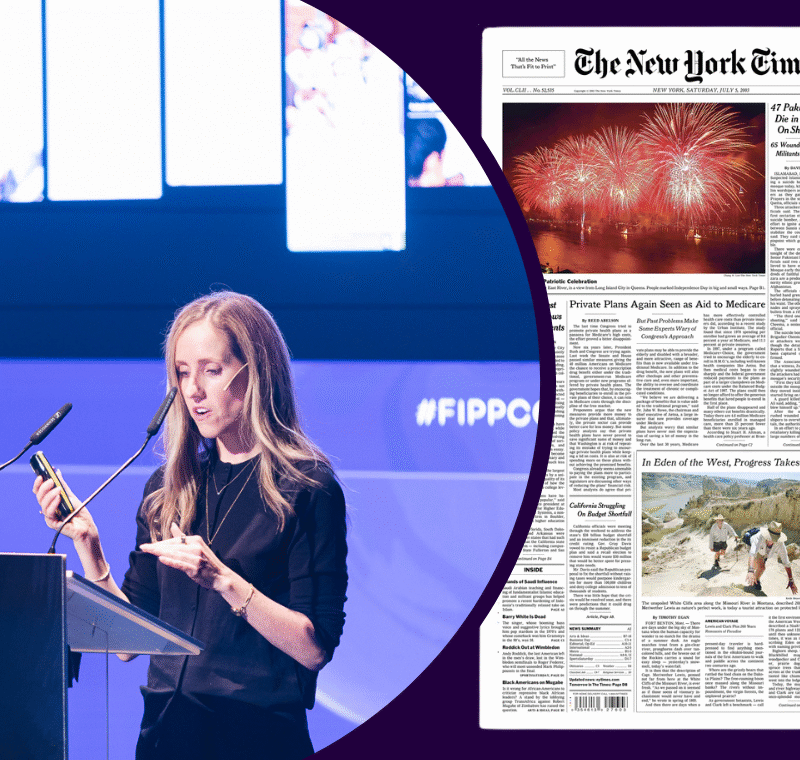Measuring magazine brands’ total footprint
These questions are behind revolutionary changes in the audience measurement systems around the world, writes Guy Consterdine, FIPP’s insight consultant.
Traditional national readership surveys have to find ways of measuring their respondents’ online behaviour in detail. Yet asking them to recall what publisher websites they’ve visited recently is a difficult task for the respondents. The fallibility of memory and the sometime lack of awareness of which website one is viewing mean that recall tends to yield significant under-estimates of the online audiences. That in turn means inaccurate data on the overlap between print and online audiences. Instead, a ‘passive’ system of automatically monitoring consumers’ website visits is required, and it has to be integrated into the print readership currency somehow.
There is no universally accepted solution yet, and different countries are setting up different answers. Some surveys resolve the problem by taking the accepted online trading currency (such as comScore, Nielsen et al) and building it into the readership survey by matching similar respondents in each survey. Each respondent in the readership survey is awarded the online behaviour of a closely matched respondent from the online currency database. In a single word, fusion.
Germany: ‘Best For Planning’
A new example of this is Germany’s Best For Planning (b4p) database, which collects extensive product usage and media exposure data including measuring readership in detail. The study is sponsored by a consortium of four leading publishers. In 2014 the GfK Media Efficiency Panel (MEP) provided passively-collected tracking data on the online audiences of publishers’ websites including, for the first time, the mobile channels, and this new kind of data was integrated into the b4p database using fusion. This has enabled b4p to:
- Provide reach figures for all tracked websites, including mobile accesses and apps
- Provide reach figures for media brands across all channels
- Segment publishers’ brand users according to the channels they access
- Link publishers’ brand users to b4p’s vast array of market and people data
- Show websites’ role in customer journeys
The Netherlands: NOM’s total brand footprint
NOM, the national readership survey in The Netherlands, is another study to have recently extended from printed editions of magazines and newspapers into measuring the total footprint of these brands, across digital and print platforms. The Dutch have been assessing reliable and representative sources of data on digital audiences, and ways of integrating them with the NOM print readership audiences. They have found solutions for the problems which arise when reviewing the suitability and quality of different sources, especially for smaller brands which require large samples to pick up an adequate subsample of readers and visitors. The overlap between platforms was a major concern. Elements of single-source data and fusion were required.
UK: a new single-source panel?
The UK may soon furnish another example of fundamentally revising a national readership survey in order to measure publisher brands’ total footprint across digital platforms. Newspaper and magazine publishers, together with ad/media agency representatives, are currently reviewing proposals to set up a radically new system to replace the existing National Readership Survey. The idea is to set up a large single-source panel, whereby software is installed on all devices used by respondents to access the web; the software or ‘meter’ then passively measures the audiences to each website. These respondents will also have answered the full array of readership questions. It means the panel would provide a direct single-source analysis of the audience duplication between publishers’ print and online properties. Fusion and other techniques would then integrate various other data into a total database.
I expect the eventual contract to be resolved within a couple of months.
FIPP Insight Forum
These German and Dutch developments will be described fully at FIPP’s Insight Forum on 18-19 May in Amsterdam. Andrea Treffenstadt of Axel Springer will talk about the b4p innovations, and Irena Petric, managing director of NOM, will describe the developments in The Netherlands. For the UK, if a new contract is determined and published by mid-May, as I anticipate it will be, I will speak about the radical new arrangements.
This topic is only one of several on the first morning of the Insight Forum. The first afternoon is devoted to research on digital – tablets, websites and digital native advertising. The second day deals with target audiences, engagement, and ad effectiveness. You can see the full programme and other details of the Forum here.
I hope to see some of you there.
More like this
Magazine websites: valued and effective









